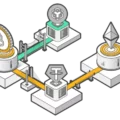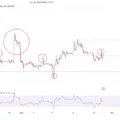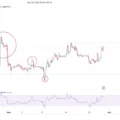Before you dive into the article, pay attention to the fact thatthe fact that none of theis financial advice, please do your own research to make a more informed decision.

“Innovation is born in the bear-market, and now such innovation is appearing in DeFi - this is metagovernance.”
According to Google, metagovernance meanssomething like a special approach to management, combining the ideas and practices of various management methods. But cryptans, as we know, exist in parallel semantic realities, so in the crypto-world the word “metagovernance” has a slightly different meaning.
In a nutshell, metagovernance is when one DAO holds the governance tokens of another DAO and, due to this, participates in the governance process of this other DAO (primarily in voting on proposals).
The simplest and most famous example is todetermine where (to which pools) incentivewise will be sent (for example, to which pools on Curve the CRV emission will go). In general, the direction and redistribution of incentives is the basis of ponzi-tokenomics and the well-known Curve wars. Less obvious examples are to secure a listing on Aave, a whitelist on Bancor, or a partnership with another DAO.
If we look a little more globally, then the goalmetagovernance may be increasing the liquidity of their stablecoins (the more rewards in the Curve pools, the greater the demand for a specific stable) and/or use cases (the token is accepted as collateral in AAVE, the more use cases for the token) for its protocol, making a profit (for example, emission and commissions with Curve pool), increasing protocol recognition, etc.
In the future, as the number of crypto projects increases and their relationships become more complex, there will be more and more reasons to participate in the management of a “neighboring” DAO.
Example 1: Convex holders constantly participate in decision-making under the Curve protocol (primarily, decisions on the distribution of CRV emissions in pools).
Example 2:Fei Protocol really wanted FEI to be listed on AAVE, but was not sure that the AAVE community would vote “yes”. In addition, 80k AAVE was required to create the propozal ($20 million at that time). Instead of buying AAVE, Fei Protocol bought 100k INDEX tokens ($2.5 million at that time). For what? And then, INDEX holders vote on proposals not only of the Index Coop protocol, but also of other protocols, the tokens of which are part of the indices from the Index Coop (in this case, AAVE, which is part of the DPI defi index). Thus, Fei Protocol, by purchasing INDEX, received enough votes in AAVE and secured the listing of FEI on their platform (interestingly, at that time, $4 million INDEX actually provided voting power equal to $36 million AAVE locked in the DPI index).
For the purposes of outlining the ecosystem, let's imagine that we have two DAOs: X and Y, and X is interested in Y making a certain decision.
It is important to understand the following:X, of course, can buy a sufficient number of Y tokens, take part in voting and thus ensure that the desired decision is made, but X’s basic interest lies precisely in making one or more decisions, but not in buying and holding other people’s governance tokens (these are unnecessary expenses, additional risks, etc.). This means we need protocols that will provide access to the “governance value” of Y tokens (voting power) at a cheaper price than purchasing these tokens.
After realizing this thought, they started mushroomingvarious meta-governance solutions appear, which we will try to describe below as briefly as possible (some protocols do not require holding any token, so they do not formally fall under the definition of “met-governance”, but their essence is the same - to provide the opportunity to influence DAO decisions) :

-
Convex Finance
Holds >50% of CRV tokens:therefore, CVX holders have the opportunity to distribute rewards in Curve pools (at their own discretion or sell their votes by receiving bribes). And protocols that place their tokens in Curve pools (for example: stablecoins FRAX and FEI, liquid derivatives stETH and rETH, Alchemix with its al-tokens, etc.) are already buying CVX (or bribing its holders) to ensure that the decisions they need are made (first of all, increasing the emission of CRV for pools with their own token). This is a multi-level metagovernance.
-
[Redacted] Cartel:
⁃ accumulated CRV, CVX and OHM in your treasury(that is, yes, in part they kind of build their protocol on top of Convex Finance) so that BTRFLY holders can influence the decisions of the corresponding protocols (or take bribes);
⁃ Hidden Hand also appeared in v2 - such a thingwhere some bring their ve-tokens (sell their votes), and others “bribe” them (pay for the solution they are interested in): BAL, RBN, FLOOR, FRAX and TOKE tokens are available.
-
Index Coop:
⁃ INDEX holders participate in all voting inprotocols whose tokens are included in their indices (AAVE, Uniswap, Compound, etc.) - this means that in order to obtain sufficient voting power, instead of buying a conditional UNI, an interested DAO can buy INDEX tokens (Index Coop itself calls this “levered metagovernance”).
-
Paladin
— a marketplace for votes (loaning or renting votes without transferring the tokens themselves) and a separate Warden platform for ve-boosts on Curve.
-
Votium
- a platform on top of Curve and Convex, allowing projects to buy votes for specific curves (gauges) in Curve (you could say “bribes”).
At TradFi we of course have similarstructures: for example, funds (BlackRock, Vanguard) often act as top 3 shareholders in public companies and, accordingly, being shareholders have voting rights in such companies. Well, this right is being successfully implemented. This is called “investment stewardship”. The key difference between TradFi and DeFi is that in TradFi such management (metagarnance) is carried out by specially trained people (like proxy managers in the team of funds holding shares, while the decision-making process of the conditional BlackRock holders of its shares do not influence in any way), and in DeFi, the variety of approaches to metagovernance is much wider: for example, in the situation with Index Coop, metagovernance is carried out by INDEX holders, in the situation with Convex, their entire infrastructure is built to create a platform for involving CRV tokens in the voting power.
In general, answer the question of whetherWhether metagovernance is an innovation or not can be done in different ways, but there are obviously significant differences from TradF (and therefore room for experimentation). The question of whether cryptocurrency needs meta-governance in this form in principle (or, after all, the holders of shares in the so-called BlackRock are more than satisfied with the fact that meta-governance is carried out for them by specially trained people), no one asks - so it is possible that we are in Over the next couple of years we will test all possible ideas in practice.
Curve-Convex style ponzi games (simplesta form of meta-governance, where a governance token is created to distribute another governance token) is a temporary phenomenon, and after realizing the toxicity of the liquidity mining construct, it will go into oblivion. But we have yet to test the viability and necessity of metagovernance in the form in which Index Coop and marketplaces with voting power offer it in practice. While Bankless and crypto-twitter, in a desperate attempt to find a new alpha, are calling metagovernance almost the next big thing, in my opinion, it is too early to make such loud statements. Although the potential and possible cases of metagovernance are quite wide, the basic need for its existence in the form described above is not obvious. But nevertheless, it is definitely worth following the development of the sphere (and if you are very interested, participate as a contributor or designer of governance models in various DAOs.





